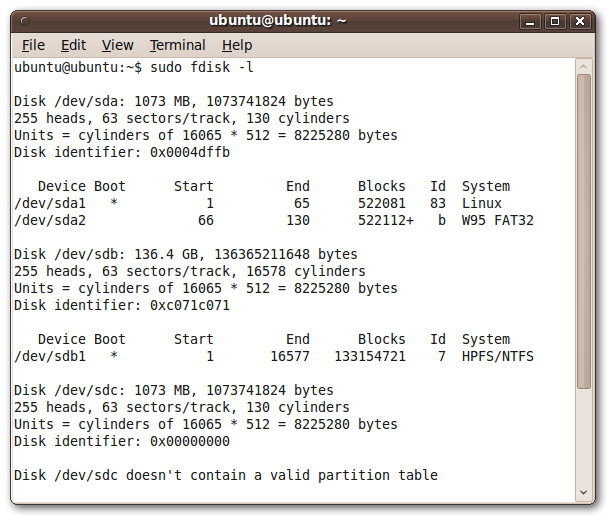Cloning a hard disk: Difference between revisions
Jump to navigation
Jump to search
| Line 36: | Line 36: | ||
<br> | <br> | ||
To clone hard disk A to Hard disk C, simple do: | To clone hard disk A to Hard disk C, simple do: | ||
$ dd if=/dev/sda of=/dev/sdc | $ sudo dd if=/dev/sda of=/dev/sdc | ||
For a large disk the command may take some time | |||
| width="550" | [[File:Ubuntu-fdisk.png|thumb}550px|center|Ubuntu fdisk -l]] | | width="550" | [[File:Ubuntu-fdisk.png|thumb}550px|center|Ubuntu fdisk -l]] | ||
|} | |} | ||
Latest revision as of 12:46, 4 March 2014
Cloning hard disk drives is a common maintenance task. Several options are available to perform clone options.
The most simple way is to boot Ubuntu from an USB-Drive and use native UNIX commands.
Ubuntu Live
The Ubuntu side has a complete tutorial how to create an Ubuntu Live USB on Windows [1] which is based on the USB installer provided at pendrivelinux.com [2][3] and a basic iso-Ubuntu distribution [4].
Unix dd
Unix dd has the functionality to clone one hard disk to another. To see what hard disk are available use the fdisk utility on linux.
$ sudo fidsk -l
The result will be something like:
See also
Reference
- ↑ Ubuntu, Create an usb stick on Windows.
- ↑ pendrivelinux.com, Homewebsite
- ↑ pendrivelinux.com, Download universal usb-installer
- ↑ Ubuntu, Download Ubuntu Desktop,
